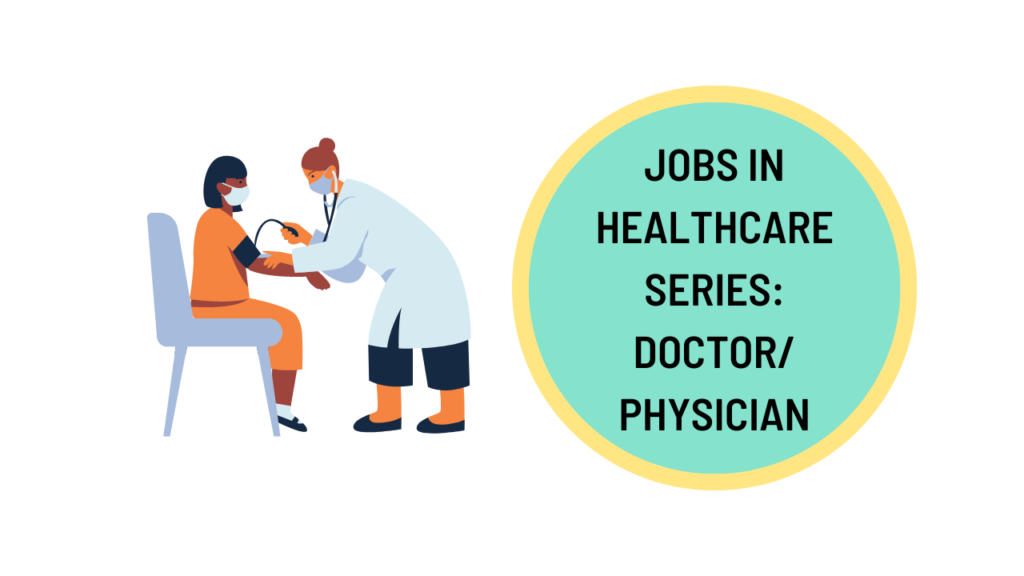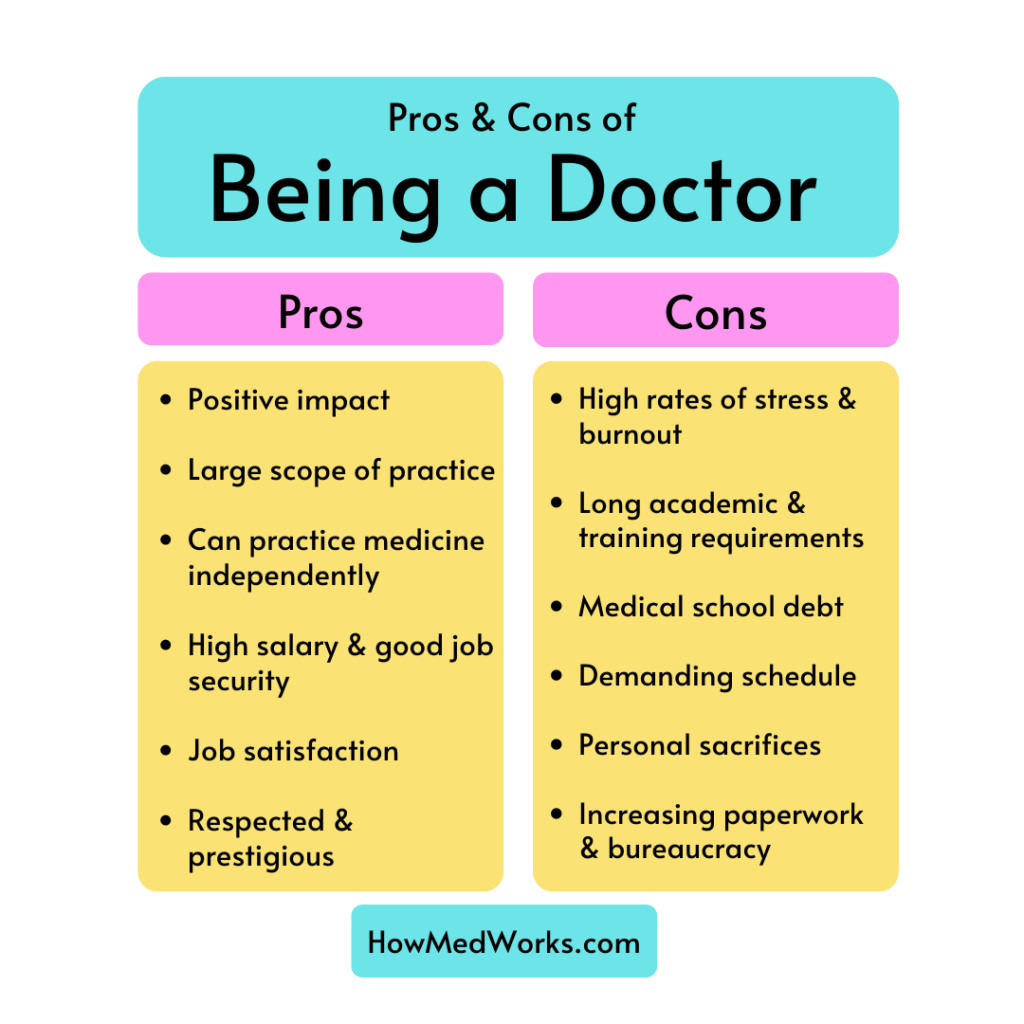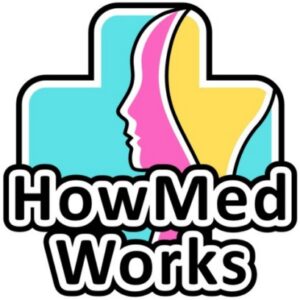
If you’ve ever stepped foot in a medical office or hospital, then you’ve probably seen lots of different medical professionals – each with their own roles – all working together to deliver patient care. Upon closer observation, you may have noticed some name tags with abbreviations like MD, DO, or PA-C and wondered what they all meant.
Maybe you’re a pre-health student trying to figure out which path you want to pursue as a future career. Or, maybe you’re a curious patient who wants to know what the differences are between each of these positions for the next time you seek medical help. In any case, you’ve come to the right place! In this article, we’ll be discussing doctors – what they do, how to become one, and some of the pros and cons of the profession. Let’s dive into it! 😀
Table of Contents
What Is a Doctor?
A doctor – also called a medical doctor or physician – is a healthcare professional with an M.D. or D.O. degree, who is licensed to legally practice medicine and treat patients. Doctors can be generalists, specialists, or subspecialists.
Generalists have a moderate amount of medical knowledge in a broad range of areas, which enables them to provide primary care and oversee chronic conditions. Contrastingly, specialists undergo extensive training in a particular area of medicine and treat patients with conditions that fall under that focus. Finally, subspecialists are doctors who choose to concentrate on an even more narrow area within a certain specialty and cultivate a very high level of expertise in that specific subspecialty.
Here are examples of generalist, specialist, and subspecialist physicians, as well as what types of patients and conditions they treat:
| Generalist | Specialist | Subspecialist | |
| Depth of Knowledge vs. Field of Study | Moderate depth of knowledge & broad field of study | High depth of knowledge & narrow field of study | Very high depth of knowledge & very narrow field of study |
| Examples | Family doctor General internist | Cardiologist Surgeon | Cardiac electrophysiologist Pediatric neurosurgeon |
| Responsibilities | Preventative care, annual checkups, managing chronic conditions, immunizations | Treats conditions within a specialty | Treats conditions within a subspecialty |
| Examples of Conditions Treated/Procedures Performed | High blood pressure High cholesterol Asthma Mild skin conditions | Heart disease Appendicitis | Pacemaker implantation Fetal surgery for spina bifida |
What Does a Doctor Do?
As physicians undergo extensive schooling and training, they have the largest scope of practice and greatest amount of responsibility out of all the jobs in healthcare. The role of a doctor is to use their medical knowledge and training to heal sick or injured patients, as well as provide patient education and advocacy.
Here’s a list of some of the roles and responsibilities of a doctor:
- Conducting physical examinations
- Ordering and interpreting labs, scans, and tests
- Diagnosing and treating patients
- Developing treatment plans
- Prescribing medications
- Performing medical procedures and surgeries
- Providing health counseling and education
Unlike most other healthcare roles, physicians can practice independently – meaning that they can diagnose and treat patients, perform procedures, and prescribe medications without supervision or collaboration. Physicians can make autonomous decisions in emergency situations, and all other medical staff must report to the attending physician.
– meaning that they can diagnose and treat patients, perform procedures, and prescribe medications without supervision or collaboration. Physicians can make autonomous decisions in emergency situations, and all other medical staff must report to the attending physician.
To help ensure adherence to professional and ethical standards, physicians are bound by strict rules and regulations, as well as a code of ethics. While it isn’t a requirement, many physicians also choose to partake in other professional pursuits in addition to their clinical practice – including research, teaching, and working administrative roles.
What Are the Steps to Become a Doctor?
Education and Training
The path to becoming a doctor is by far the longest in the medical field. Earning an M.D. or D.O. degree is only half of the battle. A physician must successfully complete college, medical school, residency, and oftentimes a fellowship in order to practice. Overall, becoming a fully licensed, Board-Certified physician takes a minimum of ten years (including undergrad) and potentially more than 14 years.
To become a doctor (MD or DO), you must complete the following:
| Degree or Certification Earned | Duration | |
| Undergraduate program | Bachelor’s degree (B.S. or B.A.) | 4 years |
| Medical school | Doctor of Medicine (M.D.) or Doctor of Osteopathic Medicine (D.O.) degree | 4 years (3 years for accelerated programs) |
| Residency | N/A | 3-7 years |
| Fellowship (optional) | N/A | 1-3 years |
Tests and Exams
Alongside schooling and training, prospective doctors must pass several exams. The tests required to become a doctor are the MCAT and either the USMLE
and either the USMLE or COMLEX-USA
or COMLEX-USA . The MCAT is a standardized exam typically taken during undergrad by those who are planning on applying to medical school. Subsequently, the USMLE and COMLEX-USA are three-part exams taken throughout medical school and early residency that are required for medical licensure in the U.S. The USMLE is required for MD students, and the COMLEX-USA is required for DO students.
. The MCAT is a standardized exam typically taken during undergrad by those who are planning on applying to medical school. Subsequently, the USMLE and COMLEX-USA are three-part exams taken throughout medical school and early residency that are required for medical licensure in the U.S. The USMLE is required for MD students, and the COMLEX-USA is required for DO students.
Becoming Board-Certified
Next is becoming Board-certified , which is optional but highly recommended. There are slightly more than a million physicians in the U.S.
, which is optional but highly recommended. There are slightly more than a million physicians in the U.S. , and over 900,000 of them are Board-certified
, and over 900,000 of them are Board-certified . Board certification is a credential that indicates a physician has passed rigorous testing and demonstrated expertise in a particular specialty or subspecialty.
. Board certification is a credential that indicates a physician has passed rigorous testing and demonstrated expertise in a particular specialty or subspecialty.
Applying for a State Medical License
The last step to become a practicing doctor is to apply for a state medical license , which enables a physician to legally practice medicine in a particular state. The physician must provide the required proof (verification of education, test scores, credentials, etc.), and an investigation for approval will follow. It’s important to note that each state has its own set of laws and statutes so a doctor looking to practice in multiple states will have to separately apply for each license.
, which enables a physician to legally practice medicine in a particular state. The physician must provide the required proof (verification of education, test scores, credentials, etc.), and an investigation for approval will follow. It’s important to note that each state has its own set of laws and statutes so a doctor looking to practice in multiple states will have to separately apply for each license.
What Are Some Important Things I Should Know About Becoming a Doctor?
Being a doctor has many benefits, including high impact, compensation, and prestige. It is currently rated #4 in Best Healthcare Jobs and #6 in Best Paying Jobs. The average MD and DO salaries are $201,918
and #6 in Best Paying Jobs. The average MD and DO salaries are $201,918 and $163,908
and $163,908 , respectively. (The average salary difference between MDs and DOs is mainly attributed to specialties, not degrees. MDs tend to specialize more than DOs, resulting in higher salaries.) In addition to a high salary, physicians enjoy good job security, since there will always be sick and injured people in need of care.
, respectively. (The average salary difference between MDs and DOs is mainly attributed to specialties, not degrees. MDs tend to specialize more than DOs, resulting in higher salaries.) In addition to a high salary, physicians enjoy good job security, since there will always be sick and injured people in need of care.
Physicians are highly respected, as being a good doctor requires good problem-solving, technical, and interpersonal skills. The doctor profession is highly altruistic by nature, since helping others is at the core of the work. Additionally, doctors have the largest scope of practice (can provide the largest range of medical services) out of all healthcare jobs. Most importantly, there’s no other profession that makes this level of direct, positive impact on others’ lives and wellbeing.
However, if you’re thinking of becoming a doctor just for the money, think again. There are significant downsides to being a doctor that should be taken into account, especially if this is a field you are seriously considering. Becoming a doctor is a huge commitment, and the biggest downside of being a doctor is the stress. Doctors are responsible for the lives and wellbeing of others so any loss or poor outcome can be demoralizing. Additionally, it can be frustrating when rules and policies – set by administration, the state, insurance companies, etc. – interfere with providing the best possible patient care.
The road to becoming a doctor is also long and difficult. Classes are rigorous, and all the time outside of class goes to studying, doing research, and making work connections. There is little time for your personal life so it’s not uncommon for personal relationships to suffer. Unless you’re getting help from family or have a scholarship, you’ll most likely graduate medical school with a significant amount of debt (on average more than $200,000 ) due to loans. Once you enter residency, you’ll be working up to 80 hours per week
) due to loans. Once you enter residency, you’ll be working up to 80 hours per week , including overnight shifts and shifts that last more than 24 hours. Although there are more resources now, sleep deprivation, anxiety, depression, and burnout still remain a reality of this profession.
, including overnight shifts and shifts that last more than 24 hours. Although there are more resources now, sleep deprivation, anxiety, depression, and burnout still remain a reality of this profession.
Here’s a table outlining the main pros and cons of being a doctor:

As with any job, being a doctor comes with its benefits and drawbacks. Pursuing this path requires a lot of sacrifices and dedication so you need to be sure and truly love the work. Becoming a doctor is hard work, and while it isn’t for everyone, it can be a wonderful and highly rewarding career for the right person. 🙂
Final Thoughts
Congrats on making it to the end of this article! Now you have a better understanding of what doctors do and a glimpse into all of the hard work it takes to become one.
Lastly, there are tons of other jobs in healthcare that you might be interested in. To learn more about the similarities and differences between a doctor and some of these other professions, be sure to check out my other “Jobs in Healthcare Series” articles! If you’re still not sure that medical school is the right path for you but want to do something very similar, you might want to consider becoming a PA. This is the healthcare profession that is most similar to a doctor, and it takes less time and offers greater flexibility. To learn more about the PA profession and the steps to become a PA, take a look at this article . Until then, stay safe and keep learning! 😀
. Until then, stay safe and keep learning! 😀
